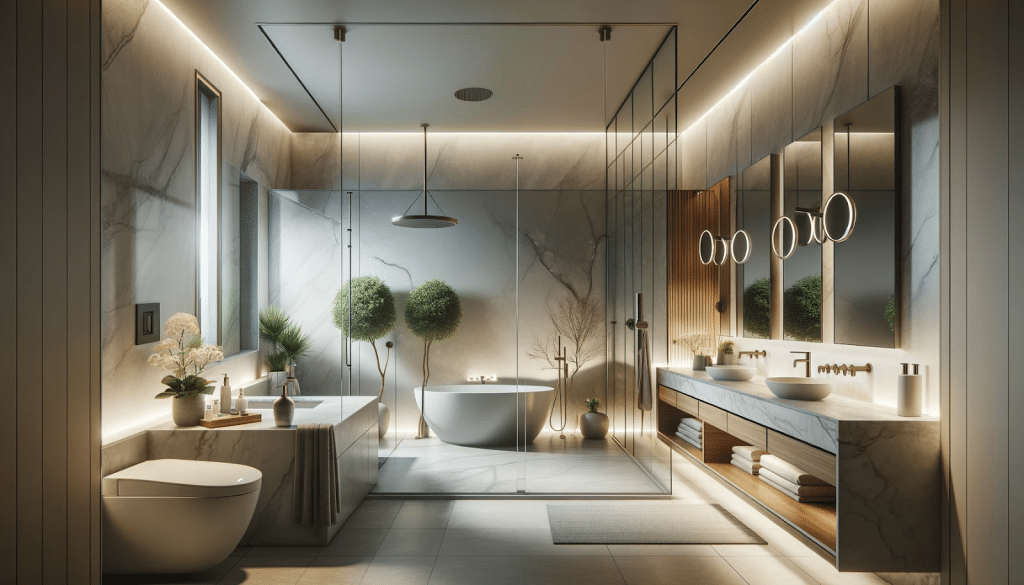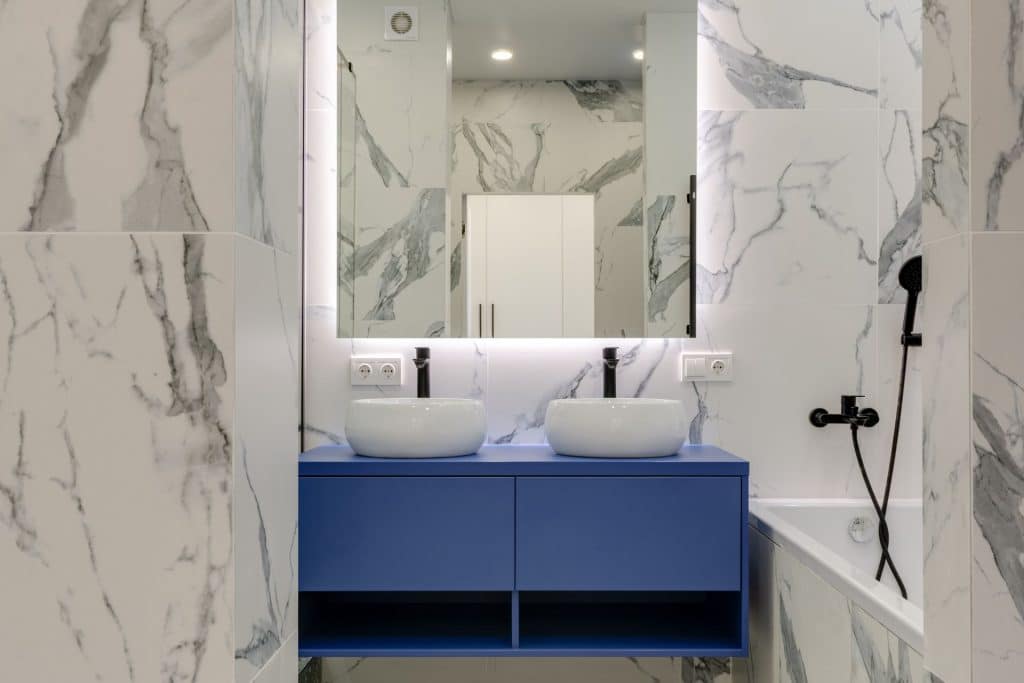The decision to incorporate bathroom ceiling lights into one’s home can often transcend mere aesthetics. With bathroom remodeling and renovation taking the front seat, finding the perfect lighting solution becomes paramount. From ensuring the room is lit adequately, to picking designs that gel with the theme, the right ceiling lights can make all the difference.
Importance of Proper Lighting in Bathrooms
Bathroom ceiling lights aren’t just decorative elements. Their primary purpose is to provide sufficient and effective illumination. A well-lit bathroom ensures:
- Safety during tasks like shaving or applying makeup.
- Enhancing the bathroom’s ambiance and feel.
- Improving the overall aesthetics after a renovation.
Example: A simple chrome-finished ceiling light can instantly upgrade the look after a bathroom remodeling project.
Best Ceiling Lights for Bathrooms
Determining the best ceiling lights often depends on both functional needs and design preferences. Typically, LED lights are popular due to their energy efficiency and longer lifespan. They also offer better luminosity, making them ideal for spaces like bathrooms.
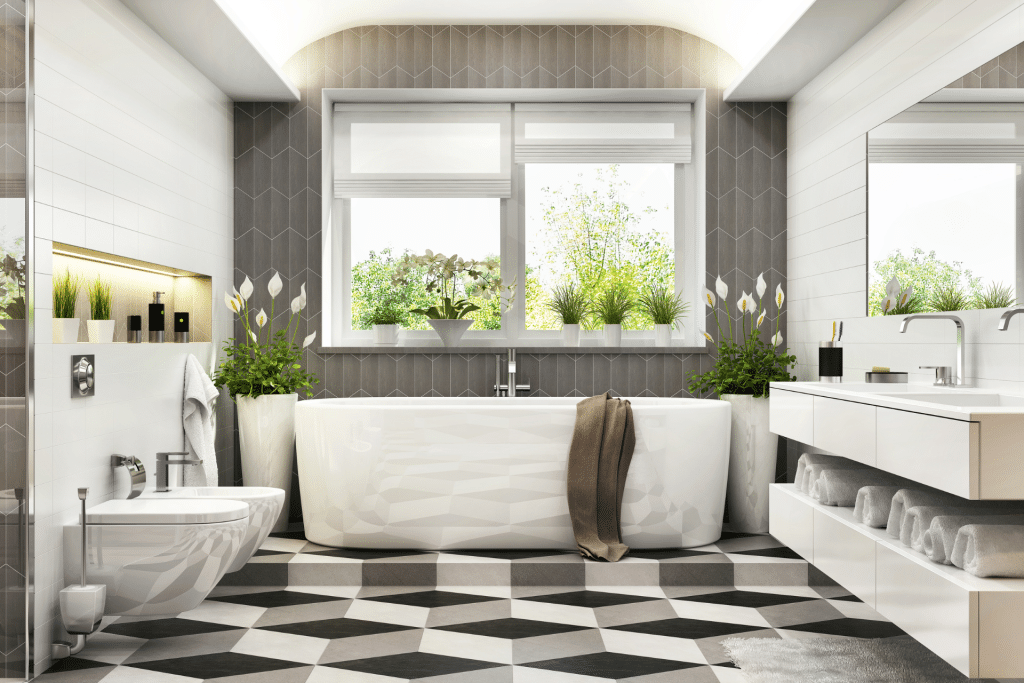
Exploring Different Types of Bathroom Ceiling Lights
Choosing the right lighting often depends on the specific design aesthetic and functional needs of your space. Here’s a breakdown of the most popular types:
Flush Mounts:
- Description: These are positioned flush to the ceiling and are especially ideal for bathrooms with low ceilings. They provide even ambient lighting.
- Example: A circular LED flush mount with a frosted glass shade can offer a modern, minimalist look to your bathroom.
Semi-Flush Mounts:
- Description: They hang a few inches below the ceiling. This type offers more style flexibility and often casts light upwards and downwards.
- Example: A bronze semi-flush mount with an open design can add an industrial touch.
Recessed Lights (Downlights):
- Description: These lights are set inside the ceiling, with only the bulb being visible. They’re great for contemporary bathrooms and provide direct, downward light.
- Example: LED recessed lights spaced evenly can give your bathroom a neat and streamlined appearance.
Chandeliers:
- Description: While traditionally used in grand rooms, mini-chandeliers can add a touch of luxury to large bathrooms. They hang down from the ceiling and can become a statement piece.
- Example: A crystal mini-chandelier above a freestanding bathtub can set a lavish tone.
Pendant Lights:
- Description: These are suspended from the ceiling by a chain or wire. While more common in kitchen areas, they can also be used in bathrooms for targeted illumination.
- Example: A pair of pendant lights flanking a bathroom vanity can provide balanced task lighting.
Track Lighting:
- Description: It consists of individual light fixtures attached to a track mounted on the ceiling. Each fixture can be adjusted to direct light in different directions.
- Example: Track lighting can be positioned to highlight both the vanity and a feature wall for added versatility.
Ceiling Fans with Lights:
- Description: These combine the functionality of air circulation with illumination. Ideal for larger bathrooms or those in humid climates.
- Example: A white ceiling fan with integrated LED lights ensures comfort and brightness.
What Type of Light is Needed?
The choice of light for a bathroom depends on the area’s specific needs:
- Task Lighting: This focuses on areas where specific tasks are done, like vanity.
- Ambient Lighting: This provides overall illumination, perfect for general bathroom ceiling lights.
- Accent Lighting: Used mainly for decorative purposes, highlighting artwork, or specific architectural features.
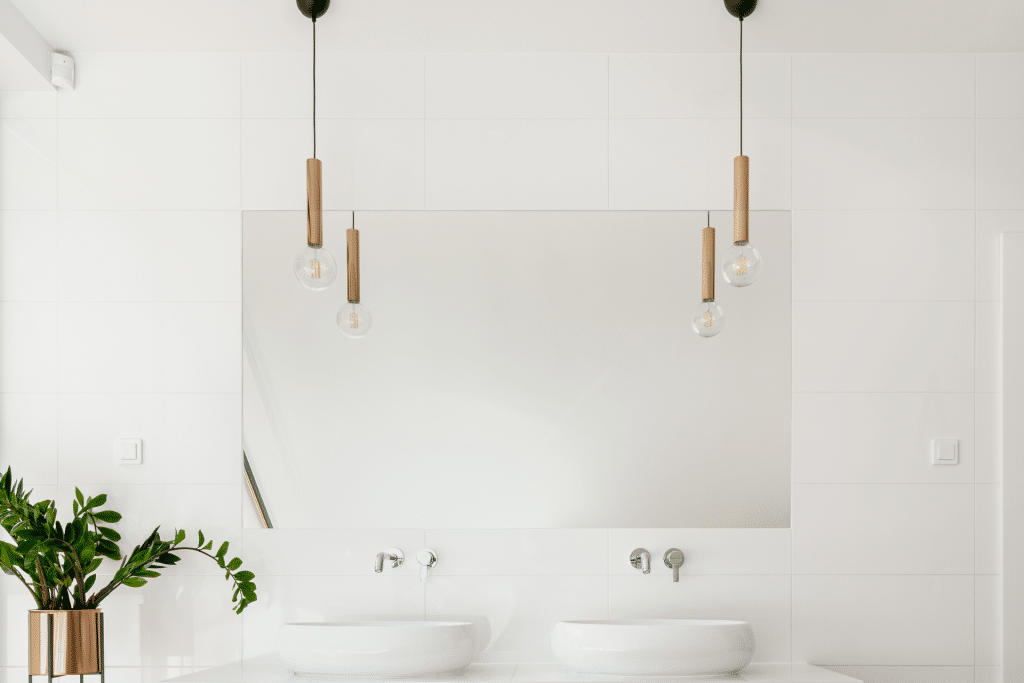
Installing Bathroom Ceiling Lights: A Step-by-Step Guide
When it comes to installing bathroom ceiling lights, a methodical approach ensures safety and precision. It’s always recommended to consult with or hire a professional electrician, especially when dealing with electrical work in moisture-rich environments like bathrooms. However, if you’re confident in your DIY skills, here’s a simple guide:
Materials and Tools:
- Bathroom ceiling light fixture
- Screwdriver
- Wire stripper
- Voltage tester
- Ladder
- Wire connectors
- Safety goggles
Steps:
- Safety First: Before you begin, shut off the electricity to the bathroom from the main circuit breaker. Use the voltage tester to confirm there’s no electricity flowing to the wires where you’ll be working.
- Remove Old Fixture: If you’re replacing an old light, remove it by unscrewing the fixture and disconnecting the wires. Make sure to remember the order they were connected.
- Prepare the New Fixture: Often, bathroom ceiling lights come with a mounting bracket. Attach this bracket to the ceiling box using screws.
- Connect the Wires:
- Strip the ends of the wires if needed.
- Follow the manufacturer’s instructions closely here. Typically, you’ll connect black to black (or red), white to white, and green or bare to ground.
- Use wire connectors to secure the connections and ensure no wires are exposed.
- Attach the Fixture: Once the wires are connected, carefully tuck them into the ceiling box. Position the fixture onto the mounting bracket and secure it, often with screws.
- Final Touches: Insert the required bulbs, and attach any additional parts (like a decorative cover or shade) as per the product’s instructions.
- Power On: Restore the electricity from the main circuit breaker and switch on your new bathroom ceiling light.
Tip: Waterproof bathroom ceiling lights might come with additional gaskets or sealing mechanisms. Ensure they are correctly in place during installation to maintain the light’s water-resistant properties.
Waterproofing: A Crucial Factor
It’s essential to consider moisture levels in bathrooms. The best waterproof bathroom light would be one that comes with an IP (Ingress Protection) rating. A higher IP rating, like IP65 or IP67, ensures that the light remains unaffected by water and steam.
Example: An LED bathroom ceiling light with an IP67 rating would be a perfect fit above the shower area.
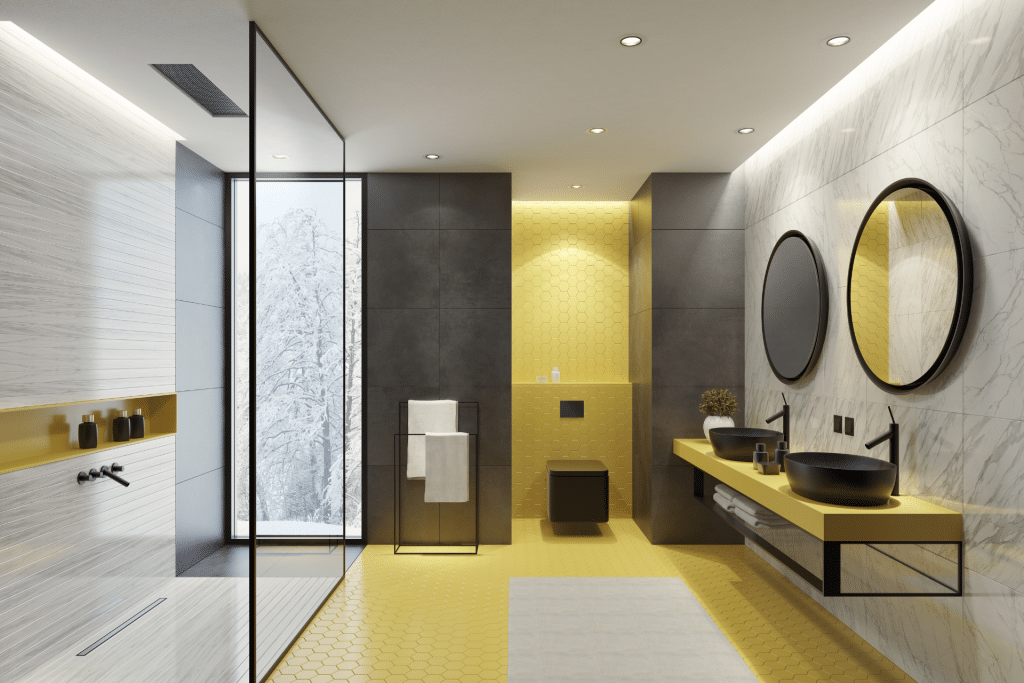
Conclusion: Shining a Light on the Right Choice
Bathroom ceiling lights play a pivotal role in both bathroom remodeling and daily use. They bridge the gap between functional necessity and design aspirations. By understanding the type of light needed, ensuring waterproof qualities, and aligning it with renovation plans, homeowners can illuminate their bathroom spaces optimally.
FAQs about Bathroom Ceiling Lights
What ceiling lights are best for the bathroom?
LED lights are often considered the best for bathrooms due to their energy efficiency, luminosity, and lifespan.
What is the best waterproof bathroom light?
Lights with a high IP rating, like IP65 or IP67, ensure maximum protection against water and steam, making them ideal for bathrooms.
What type of light do I need for a bathroom?
Depending on the area and purpose, you may need task, ambient, or accent lighting for different bathroom zones.
